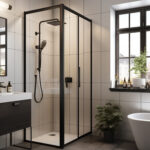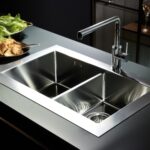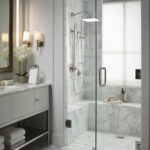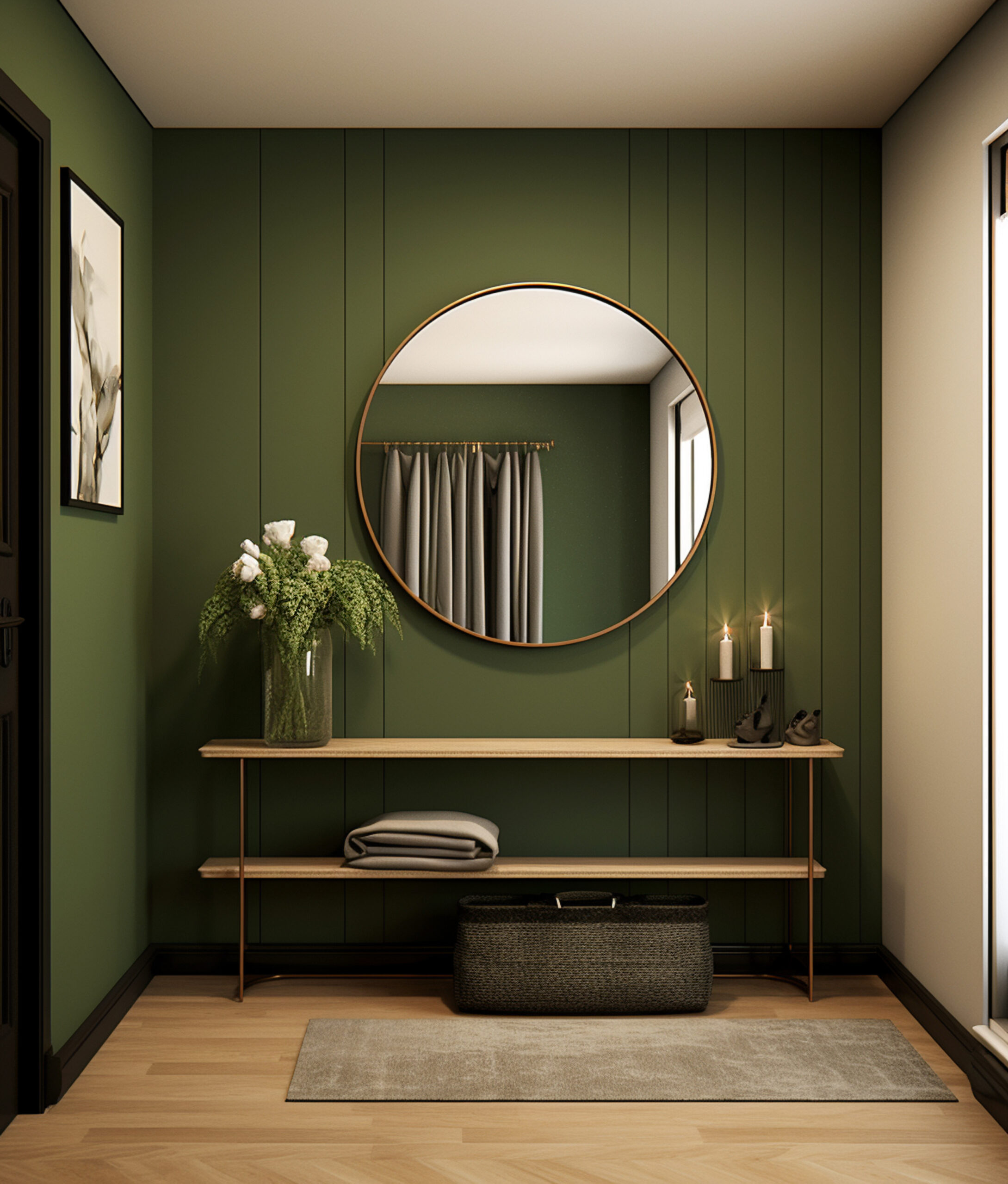When selecting a toilet for your home, you might face various options, each with its features and advantages. One of the most common choices is the two piece toilet. What constitutes a two piece toilet, its anatomy, benefits, and the steps involved in its installation?
Understanding the Basics: What is a Two Piece Toilet?
The tank and bowl comprise the two major parts of a two piece toilet, also referred to as a linked toilet. These two components are produced separately and then put together during installation. A one piece toilet, in contrast, has a tank and bowl joined together as a single piece.
How a Two Piece Toilet Works
Let’s take a closer look at the structure of two piece toilet before discussing their advantages and installation:
Bowl:
- Rim: The top portion of the bowl’s rim creates the bowl’s border and channels water into it while flushing.
- Trapway: The curved channel at the base of the bowl that carries waste to the drainpipe.
- Siphon Jet: A strategically positioned jet that creates a strong flush using water pressure.
- Mounting Holes: These are used to secure the bowl to the floor during installation.
- Seat Holes: These holes attach the toilet seat to the bowl.
Tank:
- Lid: The top cover of the tank, which can be removed for maintenance.
- Flush Valve: A mechanism that regulates the release of water from the tank into the bowl during flushing.
- Fill Valve: The component responsible for refilling the tank with water after a flush.
- Flapper Valve: A rubber seal opening and closing to release water into the bowl during flushing.
- Overflow Tube: A tube that prevents overflowing the tank by directing excess water into the bowl.
- Mounting Bolts: These bolts secure the tank to the bowl during installation.
Now that we’ve dissected the essential components of a two-piece toilet let’s explore the advantages of choosing this type of toilet for your bathroom.
Toilet bowl and tank
The toilet basin and tank are indispensable components of a modern plumbing system that play a vital role in maintaining sanitation and personal hygiene. Together, they form a functional unit that disposes of human waste efficiently and maintains a restroom’s hygiene and comfort.
Toilet Bowl:
The toilet basin is the visible, typically porcelain portion of the commode that contains human excrement. It is designed with an ergonomic shape for comfort and has an S-shaped tramway or P-trap that prevents wastewater gases from entering the lavatory. The basin is attached to the floor, where users rest or kneel to perform their bodily functions.
Key features of a toilet bowl include:
- Water Entry and Exit: There are holes along the rim and the bottom of the bowl through which water enters and exits. This allows for efficient flushing and waste removal.
- Seat and Lid: Most toilet bowls have a seat and a lid. The center is where users sit, while the top can be closed to maintain hygiene and prevent unpleasant odors from escaping.
- Bowl Shape: Toilet bowls come in various shapes, with elongated and round being the most common. The condition can affect user comfort and the toilet’s space.
- Flushing Mechanism: The toilet bowl is connected to the tank, which houses the flushing mechanism. When started, this means dismissing water from the tank into the bowl to rinse away debris.
- Cleaning Surfaces: Many stylish toilet bowls are prepared with easy-to-clean textures, such as glazed ceramic, to control the advertisement of pigments and bacteria.
Toilet Tank:
The toilet tank is the upper portion of the toilet that stores and controls the water needed for flushing. It is typically located behind or above the toilet bowl and is connected to the bowl through a flush valve. The tank plays a critical role in the flushing process and water conservation.
Key features of a toilet tank include:
- Water Supply: The tank is attached to the water supply line, permitting it to serve with water after per bloom. This water is kept until it is required for flushing.
- Flush Mechanism: Inside the tank, several components of the Flushing system comprise the flush mechanism. This includes the fill valve, flush valve, flapper, and flush handle or button. When the flush handle is pressed, it triggers the flush valve to open, allowing water to rush into the bowl and remove waste.
- Water-Saving Options: Many modern toilets are designed with water-saving features, such as dual-flush systems. These systems allow users to pick between a partisan flush for liquid waste and a full flush for solid waste, allowing water conservation.
- Overflow Tube: The overflow tube in the tank ensures that excess water does not flood the bathroom. If the water status in the tank increases too high, it will drain into the bowl through the overflow tube.
- Float Ball or Cup: The float mechanism in the tank controls the fill valve, regulating the amount of water in the tank. When the tank is complete, the float mechanism shuts off the fill valve to prevent overfilling.
Ceramic toilet
A ceramic toilet is a popular bathroom accessory because of its toughness, cleanliness, and aesthetic appeal. It is made of baked clay and has a smooth, impervious surface that repels stains and smells, making cleaning and maintaining it simple. Ceramic’s intrinsic strength provides durability after years of regular usage. Its modern design offers a timeless elegance and blends with various bathroom designs, from traditional to contemporary. Additionally, ceramic toilet are available in multiple sizes and designs to accommodate different tastes and limitations on space. The ceramic toilet, which flawlessly combines structure and function, is still a standard of contemporary sanitation in home and commercial settings.
Flushing system
The flushing system in a two piece toilet is a fundamental component responsible for waste removal and water conservation. His approach is critical to a toilet’s functionality. Inside the tank, you’ll find essential elements:
- Fill Valve: Controls water inflow to refill the tank after flushing.
- Flush Valve: Typically a flapper or canister, it releases water into the bowl when the flush mechanism is activated.
- Flush Handle/Button: Initiates flushing by lifting the flush valve.
When you activate the flush, water rushes into the bowl, creating a force that removes waste and cleans the bowl. The toilet bowl often features a siphon jet, aiding waste removal through a siphon effect.
Modern two piece toilet often prioritize water conservation, with options like dual-flush toilets offering full and partial flush modes. This design reduces water usage for liquid waste disposal, making two piece toilet more efficient and eco-friendly.
The Benefits of Two-Piece Toilets
Two-piece toilets offer several advantages, making them popular among homeowners and builders. The two piece toilet is the right fit for your bathroom:
Easy Maintenance:
One of the significant advantages of two piece toilet is their ease of maintenance. Since the tank and bowl are separate components, accessing and repairing individual parts is more straightforward. If an element in the tank malfunctions, you can simply replace it without affecting the bowl.
Cost-Effective:
In general, two piece toilet are less expensive than one piece versions. Customers will pay less because of the more straightforward production method and lesser material requirements. A two piece toilet might be a desirable alternative without renouncing grade if you have a restricted budget.
Variety of Styles and Designs:
To adjust two piece toilet aesthetics, two piece toilet are available in various forms and designs. You can select a two piece toilet that matches your décor, whether your bathroom is conventional, contemporary, or eclectic. With so many different design possibilities, you may personalize your bathroom.
Easy Replacement:
If you ever require to supersede your toilet in the future, a two-piece toilet is specific to uninstall and return. Depending on your requirements, you can maintain the existing bowl and modify only the tank or vice versa.
Efficient Flushing:
Two piece toilet are designed to provide efficient flushing performance. The separate tank allows a more extensive water reservoir to generate a more powerful flush, effectively removing waste from the bowl. Many two piece toilet also feature innovative flushing systems that minimize water usage while maintaining flushing effectiveness.
Environmentally Friendly Options:
Many two piece toilet are equipped with dual-flush mechanisms for those concerned about water conservation. These toilets permit you to select between a partial flush for liquid excrement and a full flush for solid manure, decreasing water consumption and contributing to eco-friendliness.
Installation Steps
1. Preparation:
- Turn off the water supply to the existing toilet by shutting off the water valve near the floor.
- Remove the old toilet by unscrewing the nuts connecting the supply line to the tank and removing the closet bolts securing the bathroom to the floor.
- Scrape away any old wax ring and clean the flange (the opening on the floor where the toilet sits).
2. Wax Ring Installation:
- Put a new wax ring onto the flange, providing it is centered over the opening.
3. Set the Bowl:
- Carefully lift the new two-piece toilet bowl and align it with the closet bolts on the flange.
- Push the bowl down onto the wax ring to make a watertight seal. Ensure the bowl is level by using a group.
4. Secure the Bowl:
- Place washers and nuts onto the closet bolts and tighten them evenly to secure the bowl to the floor. Be cautious not to over-tighten and crack the toilet bowl.
5. Install the Tank:
- Attach the tank to the bowl by aligning the mounting holes with the bolts.
- Set washers and nuts onto the bolts and pull them to connect the tank to the bowl.
6. Connect the Water Supply:
- Connect the water supply pipe to the fill valve on the bottom of the tank. Hand-tighten the nut, then use an adjustable wrench to give it a quarter-turn to ensure a secure connection.
7. Fill the Tank:
- Slowly turn on the water supply valve to fill the tank. Check for leaks at the toilet’s base and the water supply connection.
8. Attach the Toilet Seat:
- Follow the manufacturer’s pedagogy to lodge the toilet seat onto the bowl. This typically involves securing it with nuts and bolts.
9. Test Flush:
- Flush the toilet to ensure it functions correctly. Check for any leaks or unusual noises during the flush.
10. Finish Installation:
- Trim any excess closet bolt length above the nuts using a hacksaw.
- If desired, apply a bead of caulk to the toilet’s base to make a neat and watertight seal.
11. Cleanup:
- Dispose of the old toilet properly and clean up the work area.
Conclusion
In summary, a two piece toilet consists of a separate tank and bowl, offering numerous benefits such as ease of maintenance, cost-effectiveness, design versatility, and efficient flushing. Carefully following these stages, from area preparation through installation, is essential for a sound structure.
Understanding what a two-piece toilet is and its benefits will help you make an educated choice, whether you’re redesigning your bathroom or replacing it. A two piece toilet may provide your bathroom with years of dependable performance and aesthetic appeal with the appropriate choice and careful installation.
Must Check:https://ortonbaths.com/is-a-one-piece-toilet-worth-considering/
Must Check:https://ortonbaths.com/rectangle-showers/








